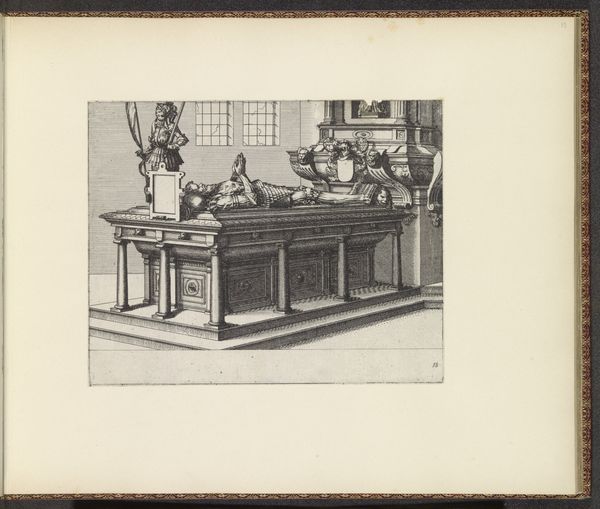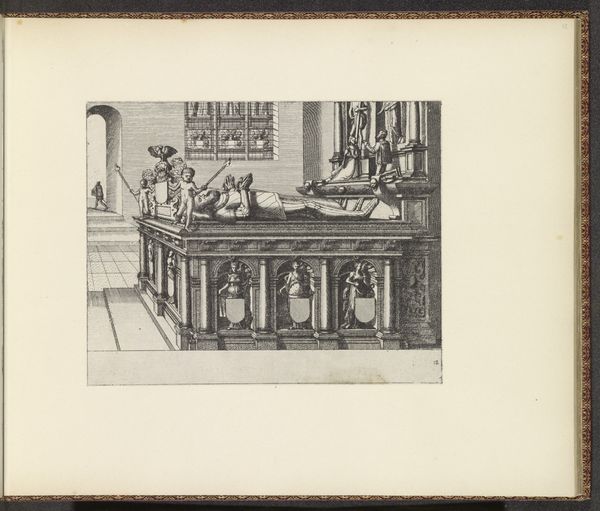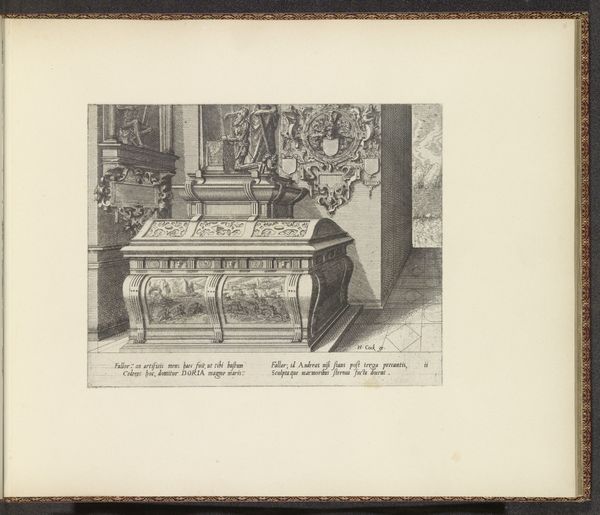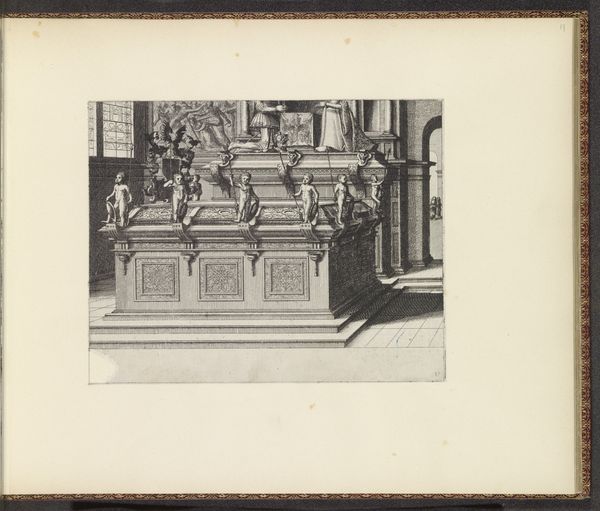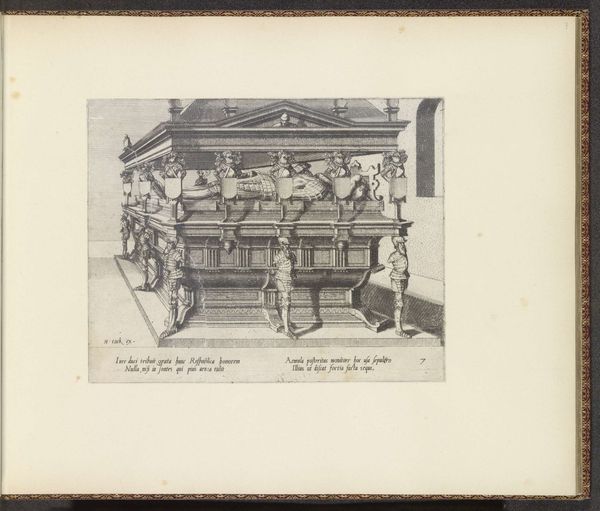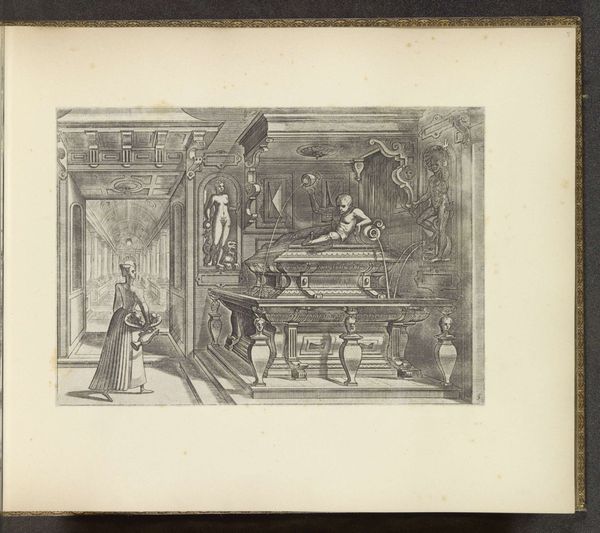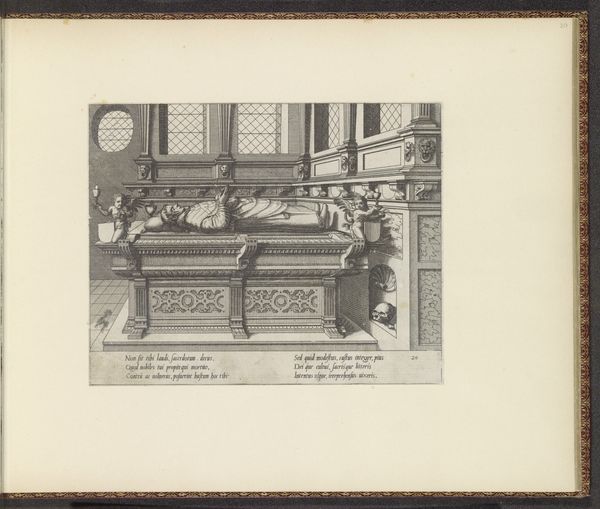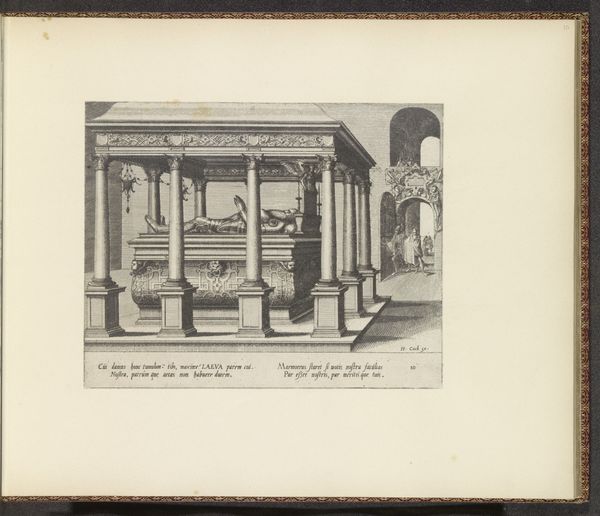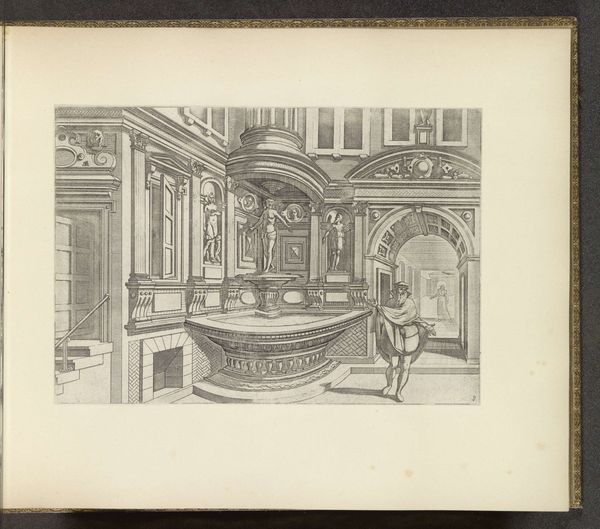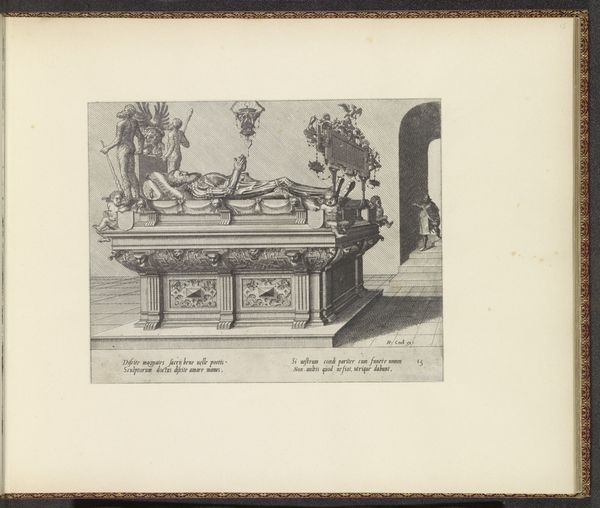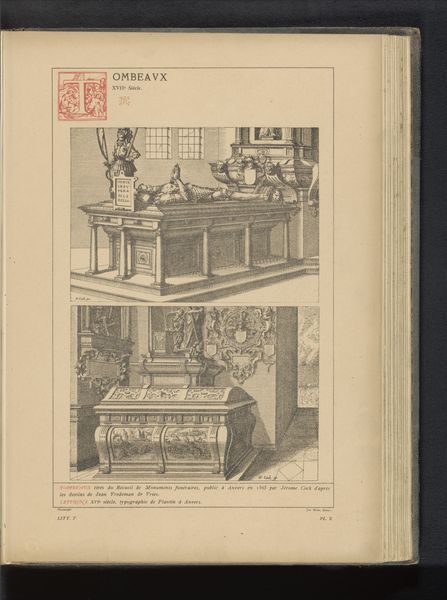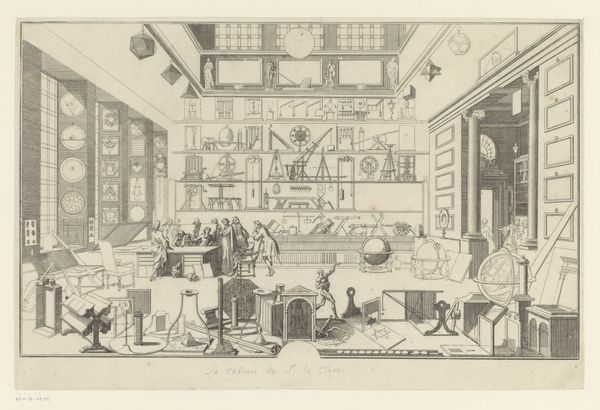
Vrijstaand grafmonument voor een echtpaar, met ridder in harnas 1563
0:00
0:00
print, engraving
# print
#
form
#
line
#
history-painting
#
northern-renaissance
#
engraving
Dimensions: height 168 mm, width 210 mm
Copyright: Rijks Museum: Open Domain
Editor: Here we have "Vrijstaand grafmonument voor een echtpaar, met ridder in harnas," created in 1563 by Johannes or Lucas van Doetechum. It's an engraving, which really captures your eye. There's almost a hauntingly calm feeling about the detail in the monument against the emptiness around it. How do you read this piece? Curator: You're right, there's an evocative serenity. The meticulous linework of the engraving truly invites contemplation, doesn't it? It is striking how this monument, burdened by so many historical trappings of status, whispers not of triumph, but of stillness and reflection. Editor: Yes, exactly. That stillness is what struck me initially. Do you think that stillness is reflective of the subject’s beliefs or what was more broadly en vogue at the time? Curator: It is both! What we have here are artistic reflexes that reveal deep-rooted social patterns in sixteenth-century Europe, where a powerful tension arises between a focus on material opulence and a turn to austere protestant spirituality. The very inclusion of the pets, those small dog statues, speaks of the subjects’ earthly longings, rendered anew within a newly available technology like the printing press. Is the image memorializing them as they were, or as how they aspired to be remembered? Editor: That’s fascinating. The way earthly and spiritual yearnings mingle is so interesting to consider. Thanks, this really opens up so many avenues of interpretation. Curator: My pleasure. And for me, you know, each artwork is a looking glass reflecting parts of ourselves and different worlds!
Comments
No comments
Be the first to comment and join the conversation on the ultimate creative platform.
